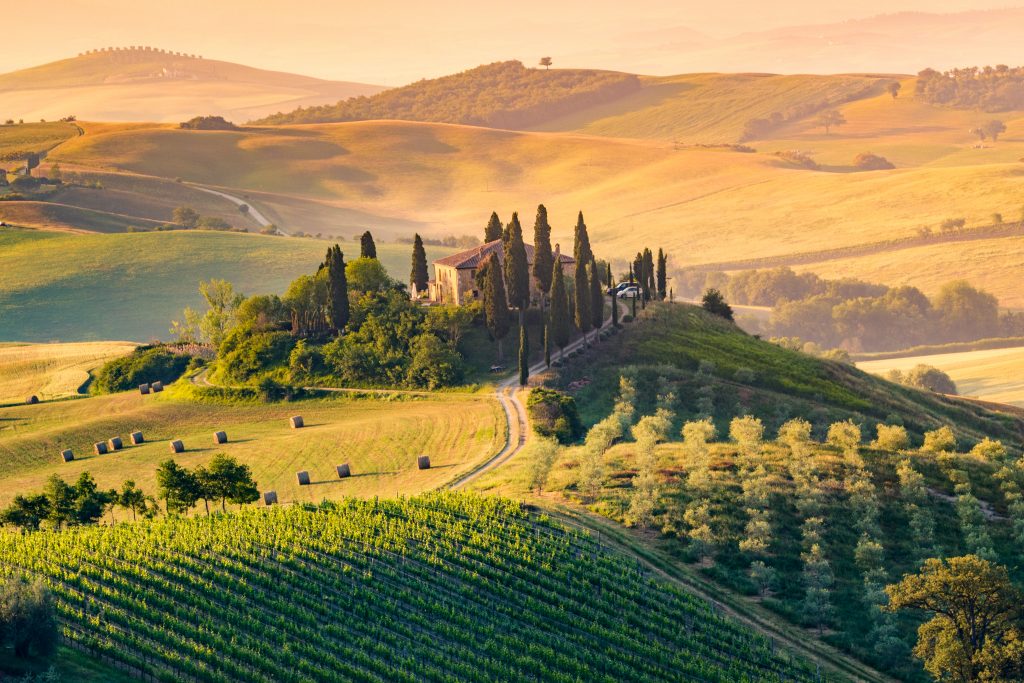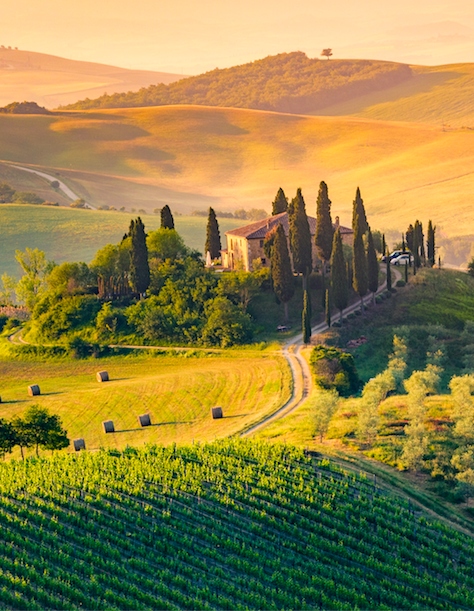Amid difficult trading conditions in the global fine wine market, Italy has stood out as an isolated bright spot – and that trend is continuing in 2025, with Tuscany’s ‘big four’ driving increased trading at Bordeaux Index. Richard Woodard reports.
 Val d’Orcia in Tuscany, Italy: Tuscany is bucking the bear market trend
Val d’Orcia in Tuscany, Italy: Tuscany is bucking the bear market trend
When the fine wine market is going through a tough time, the positives are painted in even sharper relief than usual. In recent weeks, there have been suggestions of an uptick in Burgundy trading, and renewed signs of activity among buyers in Asia. Through all of this, however, Italy has proven to be more resilient than any other part of the market.
“Italy is one of the only major regions to post growth in sales value in the first half of 2025, with activity up 14% year-on-year,” says Matthew O’Connell, head of investment at Bordeaux Index and CEO of the company’s LiveTrade platform. “While volumes remain 16% below the multi-year H1 average, this is a significantly stronger showing versus Champagne, the US and Bordeaux, where activity is down by around 50%; only Burgundy is in the same category of having higher trading year on year.”
This contrast with the more depressed performances offered by other fine wine regions makes Italy’s outperformance even more evident. The woes of Bordeaux – highlighted by another underwhelming en primeur campaign – and the correction seen in Champagne after a buoyant few years are helping to create an even more positive impression among collectors.
But if there is a surprise in Italy’s recent performance, it is that Piedmont – which back in 2016-18 was one of the hottest regions on the fine wine planet – is not spearheading the growth. Instead, Tuscany, building on its price breakout period across 2021-22, has reinforced its position as the fine wine region of choice for collectors of Italian wine.
“Tuscany continues to dominate Italian sales at Bordeaux Index, accounting for approximately 85% of total value,” explains O’Connell. “It has also proven to be one of the most resilient fine wine regions, with activity down just 10% from peak levels, outperforming peers by some margin.
“By contrast, Piedmont has seen a marked decline. Once hyped as ‘the next big thing’ back in 2020-23, it has struggled to maintain momentum, with sales volumes and values significantly off those previous highs.”
For observers who may have thought of Piedmont as Italy’s answer to Burgundy, with its focus on terroir-forward expressions of place, this may appear to be counter-intuitive. O’Connell describes the phenomenon as “the Piedmont paradox”, adding: “A great story, enviable specificity, important cheerleaders – but it just doesn’t resonate in the way that Burgundy does.”
So Italy’s recent resilience is very much a story about Tuscany; more than that, its market strength is largely concentrated in the ‘big four’ brands, familiar names that together account for roughly two-thirds of the region’s market trading: Sassicaia, Tignanello, Solaia and Ornellaia.
But, even here, there are nuances: “Tignanello continues to perform exceptionally well, registering something approaching year-on-year growth,” says O’Connell. “Solaia has also posted strong numbers, with 2025 shaping up to be its best year in the last six – pretty much unprecedented. Sassicaia remains the largest single brand by value, although 2025 trading suggests it has reached a sales plateau, with figures well below the highs of 2022-23.”
Another key to the relative success of Italy is the mix of vintages attracting buyer interest, with trading largely focused on two ends of the spectrum: either young vintages, where availability is strong and pricing accessible; or celebrated vintages of greater maturity, where quality and secondary market interest combine to drive consistent turnover.
It’s important to emphasise that Italy has not been pursuing an unremittingly upward trajectory in the recent past: as a rule, prices are currently about 10% off the peaks recorded in 2023. But this offers a stark contrast with other important fine wine regions, where pricing has slumped by between 25% and 30%.
The trend of resilience and continued interest, led by the marquee names of Tuscany, is clear enough. But what are the underlying reasons for Italy’s strength?
Firstly, there is value: O’Connell highlights Italy’s “attractive pricing”, especially when compared to Bordeaux as an obvious read-across. There’s a historic element to this too, in that the country’s wines, generally speaking, started from a lower base in pricing terms. “Italian wines were historically undervalued, allowing room for meaningful price appreciation,” O’Connell points out. “Crucially, the benefits of this appreciation have been enjoyed by both producers and collectors.”
Quality perceptions of fine Italian wine are underpinned by two further factors: strong harvests – “a run of high-quality recent vintages has bolstered confidence,” says O’Connell – and a prolonged period of increased attention to the vineyards. “A decade of sustained investment has improved quality and consistency across top estates,” he says.
These supply side considerations combine with perceptions of a robust quality-to-price ratio to create a winning trading environment for Italy, and for Tuscany in particular. But O’Connell is keen to mention one more facet to Italy’s story of resilience and appeal: changing consumer tastes. He concludes: “As Bordeaux’s star has waned, Italy has benefitted in terms of both perception and demand.”
Related news
Only connect: Bordeaux must rebuild trust, says de Boüard
All the medallists from the Global Organic and Vegan Masters
Wine and beer sales to improve New York lake health
